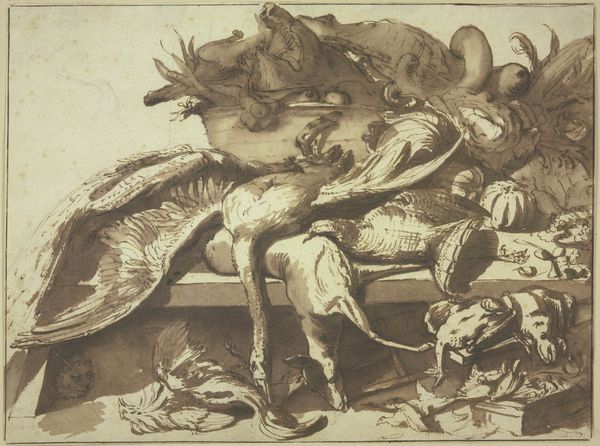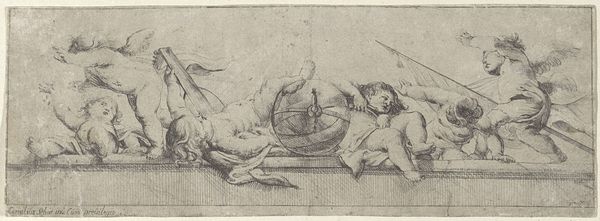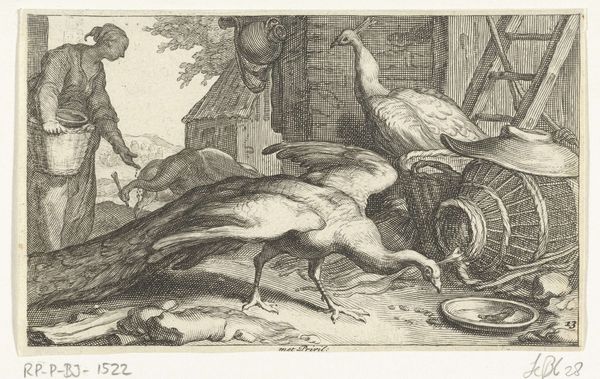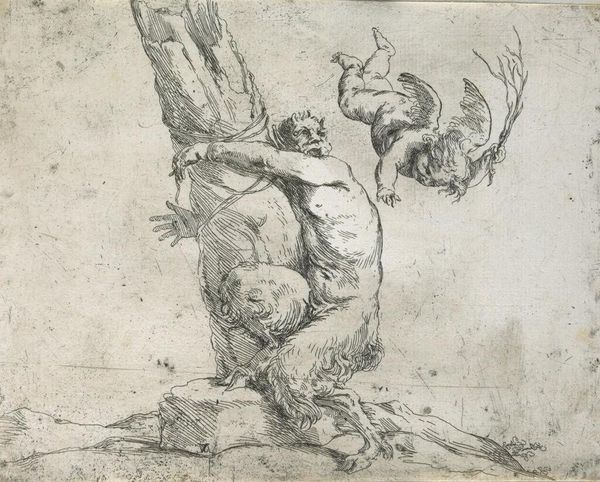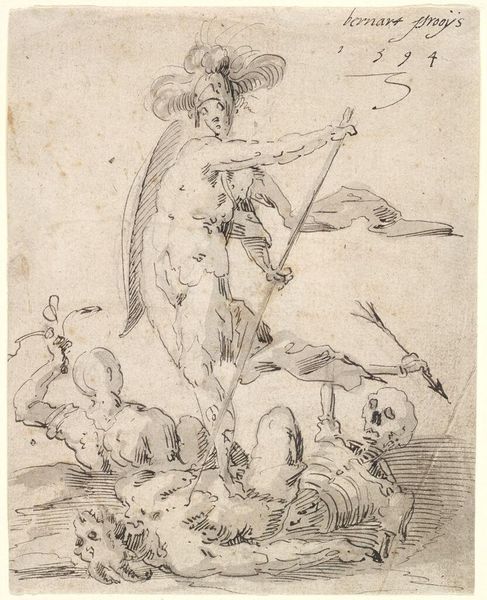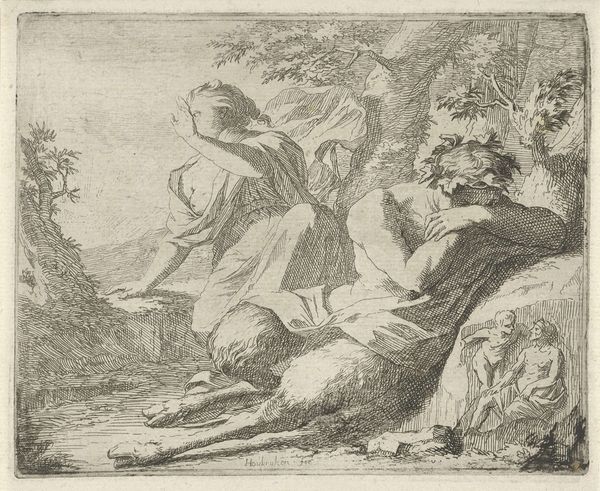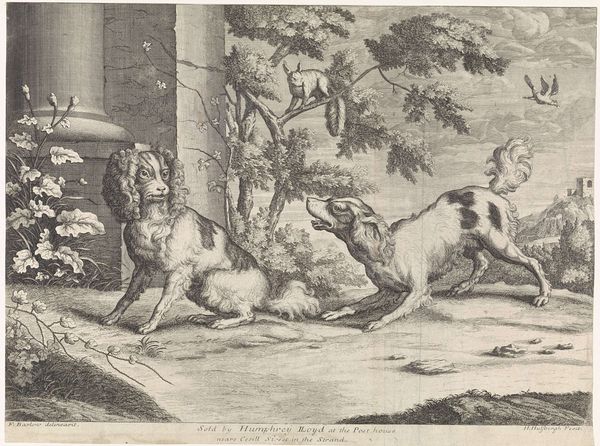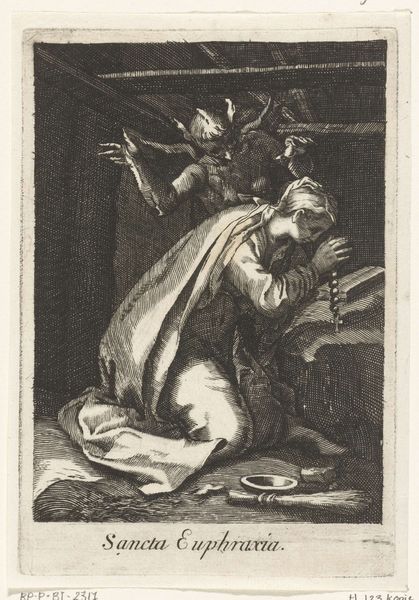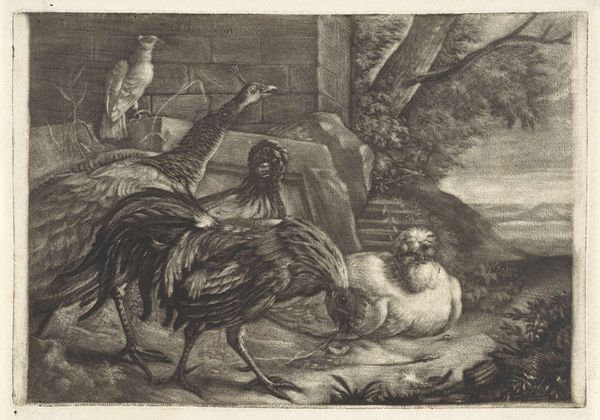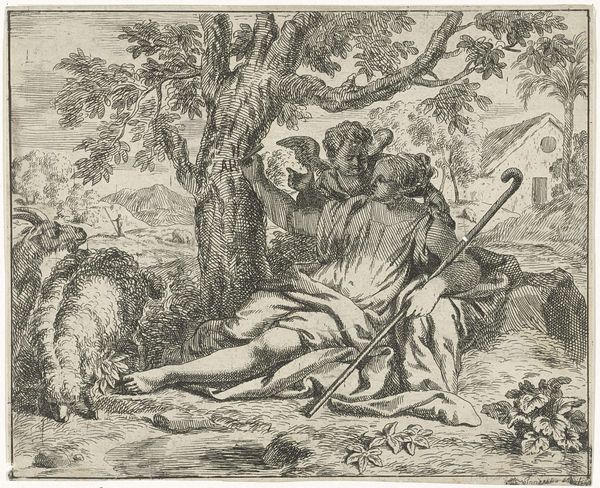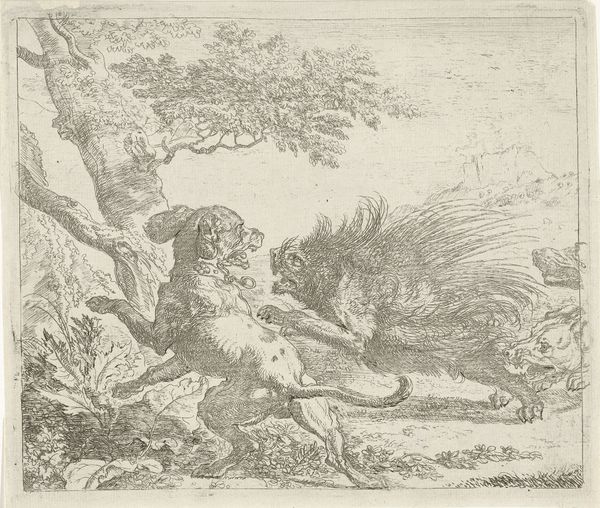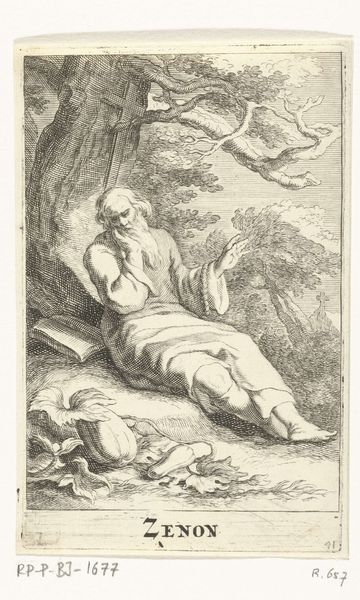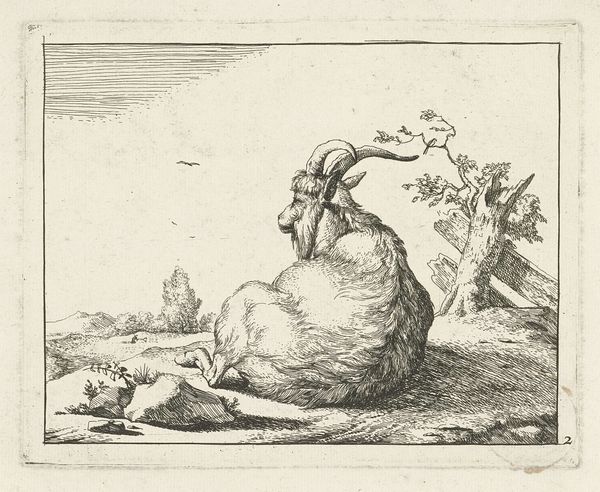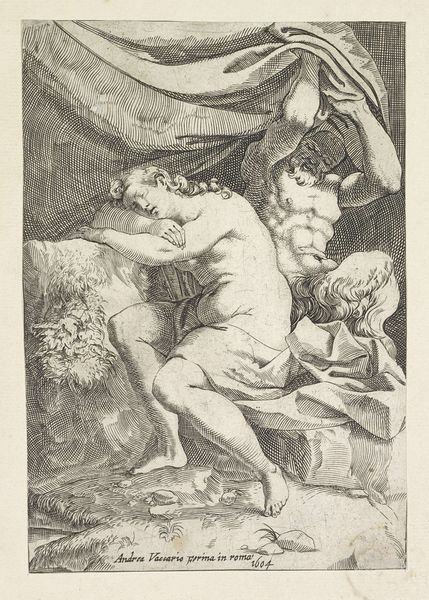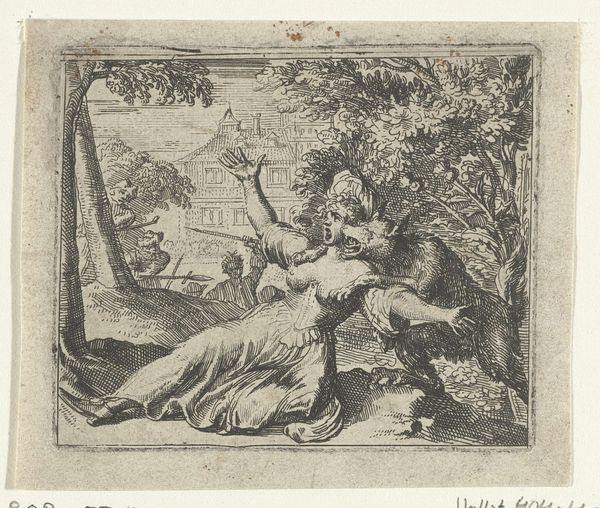
painting, oil-paint
#
baroque
#
painting
#
oil-paint
#
oil painting
#
genre-painting
Dimensions: height 100 cm, width 80 cm, depth 11.5 cm
Copyright: Rijks Museum: Open Domain
Curator: This arresting still life is “Still Life with Dead Hare and Partridges,” an oil painting rendered in 1717 by Dirk Valkenburg. What is your initial impression of it? Editor: Stark. Morbid. The texture of the fur and feathers is incredibly tactile, but the overall feeling is quite brutal. All that raw material presented in such a stark and unsettling way. Curator: These hunting still lifes were very popular amongst the aristocracy and the emerging bourgeois classes of the Netherlands. This painting offers insight into the power dynamics and consumptive displays of the elite during that period. Editor: Exactly, I am intrigued by the contrast between the painterly skill in representing such rich, textured surfaces – the feathers, the fur – and the reality of the dead animals, turned into pure objects of consumption and social status. Were these types of images intended as demonstrations of wealth? Curator: Certainly, a successful hunt reflected the hunter's prowess and access to land and resources, painting solidified this, becoming a display of dominion over nature. Think of the underlying symbolic order – these scenes are essentially trophies designed for domestic spaces, visually cementing one's social standing. Editor: Interesting. And I wonder about the physical process. How long did it take Valkenburg to complete such a detailed piece? The work involved in raising, hunting, killing and preparing food would have been significant; you don’t get much sense of that in the slick oil paint. This painting aestheticizes consumption in a way that completely erases the labor involved. Curator: And erases any ethical consideration of animal death in this context, replacing them with one tied only to privilege and property, perhaps? Its display in parlors reinforced specific cultural norms, making displays of control desirable to larger segments of society. Editor: Ultimately, looking closely at pieces like this shows us that even in stillness, objects communicate a great deal about their time. A kind of quiet but devastating record. Curator: Indeed, its ongoing visibility in public collections such as this helps keep those complex histories visible as well.
Comments
No comments
Be the first to comment and join the conversation on the ultimate creative platform.
